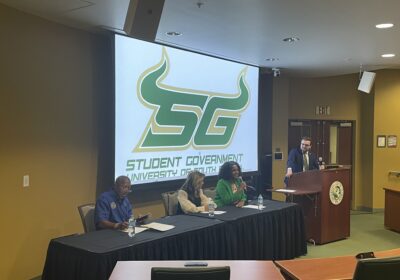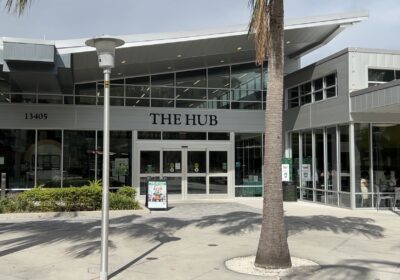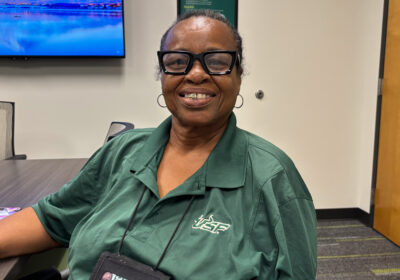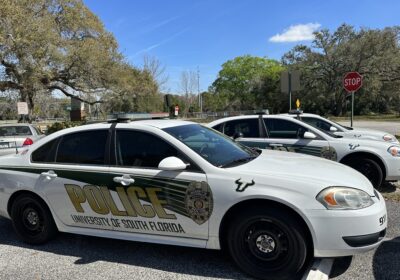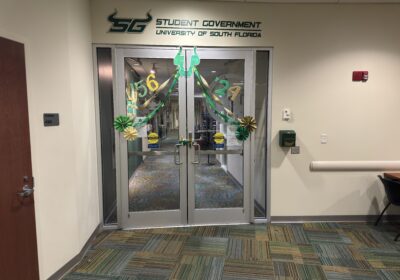BOT approves draft plan and guidelines for fall reopening
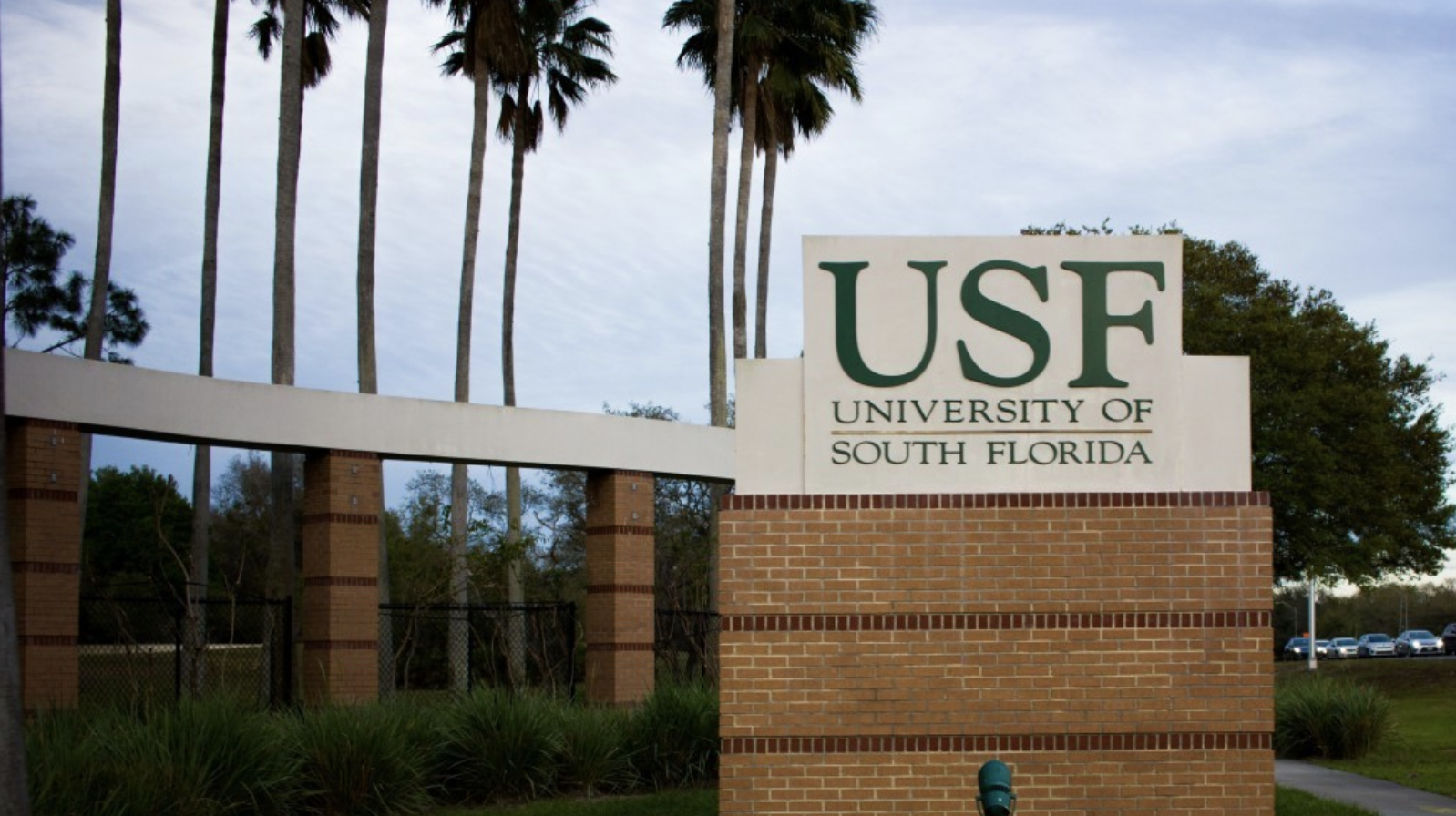
Under strict guidelines and regulations, the Board of Trustees (BOT) on Tuesday approved the draft of the Resuming University Operations Amid a Global Pandemic plan to resume campus operations in the fall.
Based on a “blueprint” presented by the Board of Governors (BOG), the plan consists of a four-phased approach to resume normal campus operations in the fall. Each phase will limit the number of individuals across all three campuses which, over time, will slowly increase the levels of activities in operations.
Under space configuration and strict protective measurements, the first phase consists of 25 percent of staff returning to campus as well as enforcement of cleaning procedures and social distancing requirements to limit the spread of COVID-19.
For the second phase, up to 50 percent of staff will be allowed to return to campus with extensive protective measures still in place. The resumption of critical services will be expanded and guidance will be provided to move into the third phase.
With a near-full resumption of operations, 75 percent of staff will be allowed back on campus during the third phase. The university needs to be in phase three prior to the beginning of the fall semester, according to USF Health Dean Donna Petersen.
“We need to be in phase three for the fall semester to fully commence as planned. So that gives us a couple of months to ramp up to phase three,” Petersen said. “So we’re hoping to launch phase one very soon, but before you get all excited, we’ve pretty much been in phase one for a while and we never actually closed.
“So when we move into phase one we’re not expecting a lot of change.”
Depending on the Centers for Disease Control and Prevention (CDC) lifting social distancing guidelines and the rate of transmission in the six-county USF region being stable below 1.0, the university will move into its fourth and final phase, which will return campus to full operations.
If the number of cases increases or a state order is issued limiting campus operations, the university may revert back to a more restrictive phase.
Measurements including the required use of face coverings, cough etiquette, the use of physical barriers and the practice of handwashing will be strictly implemented once campus activity resumes in the fall. Removal from the activity and/or possible disciplinary action might be taken in case the safety practices are not met, including removal from class.
Petersen said the use of face coverings will be required at all times in shared spaces.
“This has been a topic of considerable discussion and debate and I think where we’ve landed is that masks will be required to be worn in shared spaces, particularly enclosed shared spaces: classrooms, laboratories, offices, points of service,” Petersen said.
“So wherever people are together and it is challenging to maintain the physical distancing requirements, then we are going to require the wearing of a mask. So if you’re in your own dorm room or you’re walking by yourself across campus, we wouldn’t expect you to wear a mask.”
The university will provide hand sanitizers on all campuses as well as two reusable cloth face masks for each student, faculty and staff, according to the plan. Enhanced cleaning protocols in high-touch surfaces and in classrooms on a daily basis will also be in place.
Additional personal protective equipment, or PPE, including gloves and face shields, will be provided if daily tasks require them.
When it comes to extracurricular activities, students might see significant changes when attending events or participating in club meetings.
With all campuswide events suspended through the end of July, other events might be canceled further into the year and new guidelines will be implemented as a way to limit the spread of COVID-19.
As the university slowly expands the resumption of on-campus activity, campuswide events may only resume during phase three with a limit of 50 attendees. Depending on CDC guidelines, unrestricted events may resume in phase four.
All event request processes will be reviewed by the COVID-19 Task Force as a way to ensure the health and safety of the community.
When campus operations resume in the fall, students, faculty and staff will have to adhere to a different lifestyle than they were used to.
Dining on campus will look significantly different compared to previous semesters. With enhanced cleaning procedures, USF Dining Services will implement physical barriers at registers, capacity limitations in high-volume areas, removal or taping of seating areas, directional arrows/stickers on floor for entry, service and exit queues and floor markings specifying social distancing guidelines.
Besides dining, Parking and Transportation Services will also adhere to new safety guidelines.
Under new social distancing guidelines, students might no longer see a packed Bull Runner when rushing to classes. Parking and Transportation Services will start limiting the number of passengers on buses and implement a bus disinfection program on a daily basis. Buses will be disinfected once per day and driver areas 2-3 times per day.
Housing and Residential Education will also operate under limited capacity and new regulations in fall.
The use of common areas and lounges will be limited to building residents, and the use of face coverings and compliance with social distancing guidelines will be required.
Among other changes, plexiglass barriers will be placed in high-traffic service areas, water fountains will be turned off and automated fixtures and paper towel dispensers will be installed across residence halls.
From waiting in long lines to taking the elevator to the impossible task of finding a parking spot near the building’s entrance, the madness of moving in will look a lot different than previous years.
This year, students will have to select appointment times when moving into their residence halls while following CDC guidelines. There will be a cap on the number of residents moving in per day and per building, as well as the number of helpers each resident can bring.
In case residence halls close earlier and unexpectedly in the semester, refunds will not be issued to students.
When it comes to sporting events, athletes and fans will have a different experience compared to previous years.
Fans will only be allowed to attend athletic events if consent from a state, local and university official is issued. If consent is given, USF Athletics will host games and sporting events under limited capacity, and implement protocols for tailgating and entrance-screening procedures.
Prior to their arrival on campus, student-athletes will be required to complete COVID-19 testing.
Activities requiring direct or indirect contact between student-athletes will not be authorized during phase three. Only small group activities consisting of less than 11 people and gyms will be allowed to open.
Prior to training, student athletes and staff must have no symptoms of COVID-19 for 14 days and live at the training location for 10-14 days. Individual temperatures will be taken before training starts.
Besides following guidelines implemented by the American Athletic Conference, USF Athletics will also comply with guidelines adopted by the university, including the creation of an Infection Response Team (IRT) and addressing the issue of COVID-19 safety and hygiene training to all employees and student-athletes who return to train and work in facilities across campus.
As the university expects to welcome back thousands of people in the fall semester for the first time since spring, students, faculty and staff will be required to take a “baseline symptom survey” to evaluate their current state and exposure to COVID-19.
“We are working on a symptom tracking app that everyone would fill out every day if you have a fever or high temperature,” Petersen said. “We are still considering whether or not we would have the handheld thermometers that you would point at people in certain locations. We haven’t decided whether we will or not at this point, that’s still something we’re discussing. You may have read about giant temperature scanners, a lot of people promoting those but we are not in favor of those.”
Students returning to campus from outside the state and countries with a rate greater than 7 percent in COVID-19 cases will be required to be tested prior to their arrival. In addition, 10 percent of the students, faculty and staff returning to campus will be selected randomly to test for COVID-19.
A university email with the location to receive and drop off the self-administered COVID-19 test kit will be sent out to those selected for testing.
All individuals who test positive or are asymptomatic will have a telehealth medical evaluation and will be required to isolate for 14 days from the test date.
In case a student may need isolate during recovery or while waiting for a test result, Housing and Residential Education would reserve 250 beds between the Tampa and St. Pete campuses.
As the university transitions back to face-to-face instruction, students will not be required to attend on-campus classes in fall.
Although in-person classes will return, the university will still rely on online instruction as part of hybrid delivery mode, including studios and labs.
As of Tuesday, more than 32,000 students have registered for fall classes, according to USF Provost Ralph Wilcox.
In the fall semester, face-to-face classes of over 100 students will be required to be conducted virtually while class sizes of 50-100 will be “strongly encouraged” for virtual delivery.
For larger classes with over 100 students, another option will be provided. In addition to online delivery, the university will give the option to split the classes in two different sections, according to Wilcox.
As a way to mitigate the spread of COVID-19, all classes and exams will be delivered remotely after Thanksgiving break. While the original first day of classes remains the same on Aug. 24, the new last day of classes on campus was adjusted from Dec. 4 to Nov. 25.
With the implementation of new guidelines and procedures to maintain the health and safety of the USF community, the university will have to bear COVID-19 expenses for the fall semester.
From the purchase of PPE and facility enhancements to cleaning and sanitation supplies, the university will have a projected cost between $16.7 million and $25.1 million in COVID-19-related expenses in the fall.
To bear the expenses, potential sources of funding include the CARES Act ($17.4 million), E&G Carryforward funds and the distance learning and technology fees.
As a way to educate the USF community on the new safety requirements and expectations for the resumption of campus operations, the university will implement a marketing campaign to “facilitate effective personal hygiene, utilization of personal protective equipment (PPE), and social distancing practices across the university community,” according to the plan.
President Steven Currall said the campaign will be fundamental to spreading awareness and mitigating the risks associated with COVID-19.
The marketing campaign, set to begin June 17, will consist of posters across campuses on the importance of social distancing, wearing masks and regular sanitation procedures.
With the BOT’s approval, the university will submit the final plan to the BOG on June 12 and present it in person on June 23.

